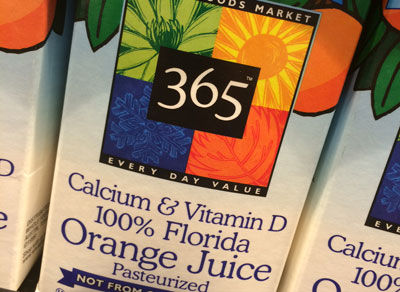
Is Texas Wine Like Orange Juice?
A friend of mine related the following story to me with the caveat that many wineries were likely tired of hearing people like Andrew Chalk (click here) and I (click here) rant about sourcing of grapes used in Texas wines and how wine labeling should accurately reflect the source of the grapes. Who cares any way?
The Anonymous Friend said, “I’ll pass on one story that was told to me by a winery… ‘Take Minute Maid. They have to have orange juice on the shelves [in stores]. What if Florida where they get their oranges from gets a freeze that year and there’s no crop. It happens. Do they just say we’re not going to make orange juice until we can get Florida oranges? No, they look anywhere in the world (outside the country) to get oranges so they can still provide a product. Do consumers care then that the orange juice is not made from Florida oranges or just that Minute Maid made a really good orange juice?'”
If I follow this analogy and apply it to Texas wine (like I believe was the intention of the story), then Texas wine SHOULD BE just like orange juice, right? It doesn’t really matter if Texas wine is made with grapes that come from Texas or Lodi or Washington State or anywhere else. But, should the label on the wine (or orange juice) accurately reflect the source of the fruit?
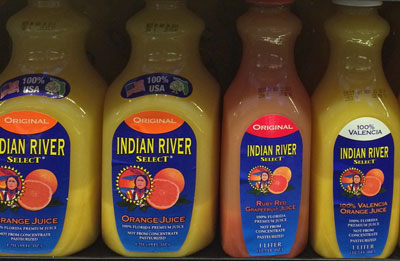
This story got me thinking how orange juice drinkers might feel about the source of the oranges and what the companies that make orange juice do to label there orange juice products. So, I went and did some research at HEB and Whole Foods Market. What do you think I found out?
As I suspected, of people in the store that day that were buying orange juice, some wanted to know where the oranges came from and some didn’t. OK, that issue was settled. Orange juice consumers WERE just like wine consumers.
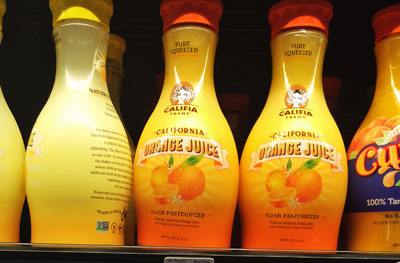
Next, I inspected several containers of orange juice. Do you know what I found out? Each carton of orange juice indicated where the oranges came from, as least to an extent. As these photos show: (a) Containers of Florida orange juice indicated “Florida Orange Juice”, (b) Containers of California orange juice indicated “California Orange Juice” clearly on the front label. Containers of more generic orange juice indicated that it was just made in the USA and some indicated a mix of sources like “USA and Mexico”. In all cases, the origin of the fruit was clearly and correctly indicated.
Now, I don’t profess to know the labeling regulations for orange juice (how much is needed to be Florida or California orange juice). After all, I can barely remember some of the rules that apply to wine labeling.
It appears to me that orange juice manufacturers do correctly indicate the source of the fruit in their juice. The use of the words “California” and “Florida” on orange juice cartons appears to me to be analogous to using the word “Texas” on the wine label to indicate Texas appellation of wine. Using the words “USA” on orange juice looks to be analogous to wine labels containing the words “American Wine”. Frankly, I don’t know if there is anything in the wine world analogous to “USA and Mexico”.
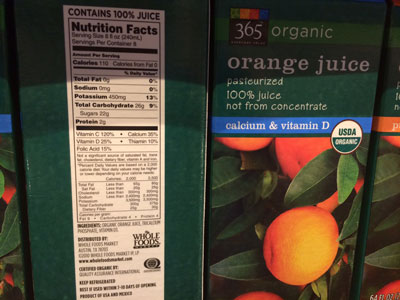
Maybe labeling of orange juice and wine do have something in common. But, you know, I didn’t see one carton of orange juice with the meaningless and confusing words, “For Sale in Texas Only“. If I had seen that on a carton of orange juice, just like for Texas wine, I would have wrongly interpreted that the juice carrying that label was a special product of Texas only allowed to be sold to fellow Texans within the confines of the Great State of Texas.
What do you say, let’s try to make the source of wine grapes in Texas wine as easy to determine as the source of oranges in orange juice. That shouldn’t be too hard for all Texas wineries to do. Then, maybe Andy and I can shut up and spend more of our time sipping more wine and less time typing borderline esoteric wine blogs. We are almost there, there are only a few Texas wineries that persist in using “For Sale in Texas Only” rather than America or other correct grape source.
P.S. I hope that you all take these points under serious consideration while also understanding and accommodate my tongue-in-cheek approach used in this blog. I also know that it is seriously hard to start a new wine producing region. I’ve talked to most of the key people in the Texas wine industry that have made an impact here. I appreciate their hard work and dedication; their grit and gumption, and so do many consumers. By and large, nearly all people in the Texas wine industry want to be honest and deal squarely with consumers. Please keep in mind that in the modern marketplace, trust starts with clear and honest labeling. There is no room for anything else. Thanks to all Texas wineries that, if enough Texas grapes are not available, that you correctly indicate the source of the grapes on the label – from American Wine to Temecula, Sierra Foothills, to Columbia River Valley. I’d rather have a bottle of wine that I can appreciate it’s source than one that has no source. Cheers to your success, now and in the future.
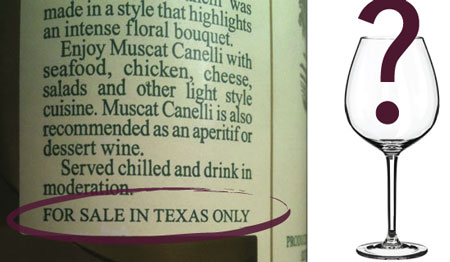
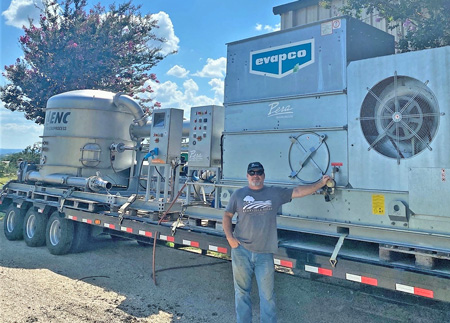

This is actually one of the biggest trends in the wine business, not just in Texas but globally. Mike Veseth at the Wine Economist has written about it for several years, and populrized the concept. He calls it juice box wine — http://wineeconomist.com/2013/05/21/juice-box-wine/
The idea is that the big wine companies that make most of the wine we drink don’t need appellation to sell their wines. So, if moscato is hot but there isn’t enough Italian moscato, they’ll bottle moscato from their various sources around the world and do an NV moscato, in the same way Minute Maid does orange juice.
Is this wrong? It is, if you care about terroir, which is what great wine at any price should be about. But if you want a competent bttle of $8 moscato, who’s to argue?
Jeff (Wine Curmudgeon) Siegel,
Many thanks for the very well versed comment. At $8, I would tend to agree with you. But do you think that the future of the Texas wine industry will be based on the $8 bottle of wine? I don’t think so unless the wine in the bottle is not from Texas, and this feeds right back and directly into a reason for non-appellation. But, why FSITO? If you blend Texas with Argentine wine how would it be appellated on the label?
The future of Texas wine is Texas appellation wine, of course. But what’s important to note is that FSITO and American labelled wines are not unique to Texas, but are happening all over the world. Isn’t this how Ste. Genevieve does business?
At some point, when we have enough grapes here and given the size of the Texas market, someone from outside of Texas will buy in. Then we’ll be arguing this point again. It’s worth noting that most people, including the so-called experts, have no idea how big the biggest wine companies are and how much wine they make. If we ever got a fraction of the 80,000 acres that the Central Valley has, I’m sure you’d see Texas grapes blended with California grapes for juice box-style wine.